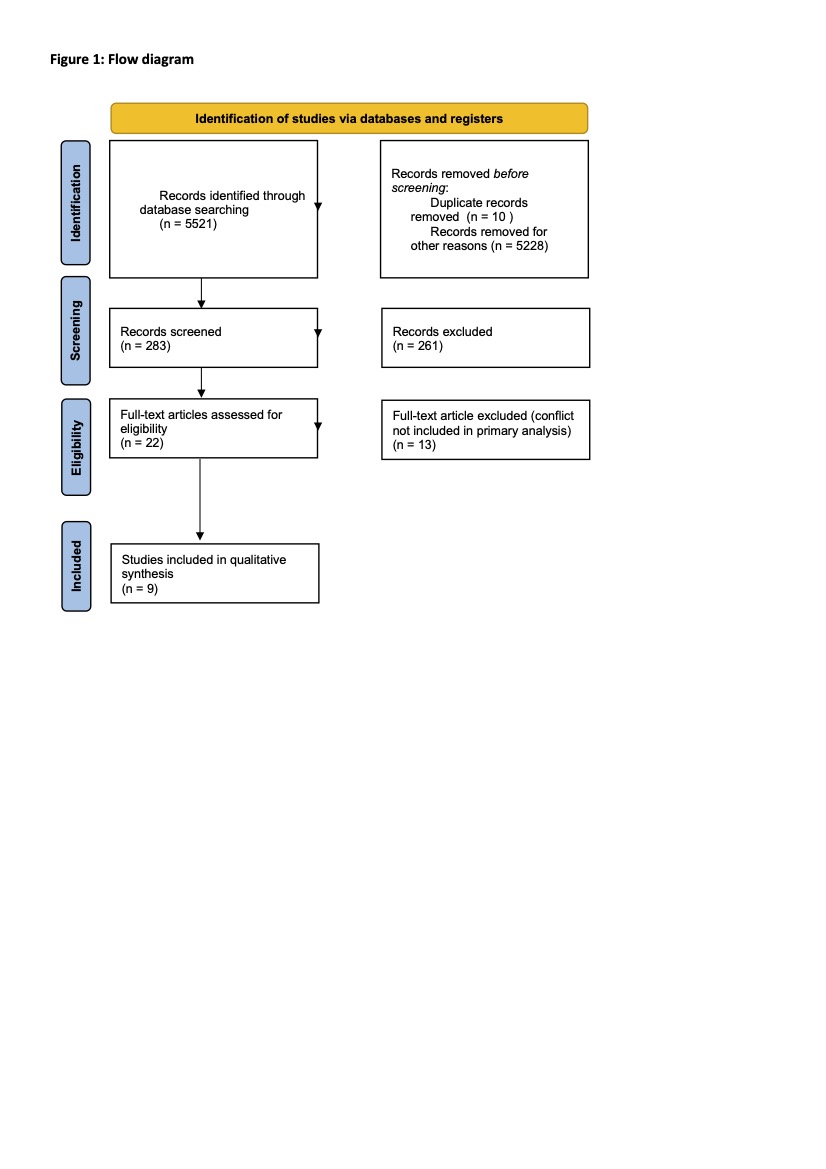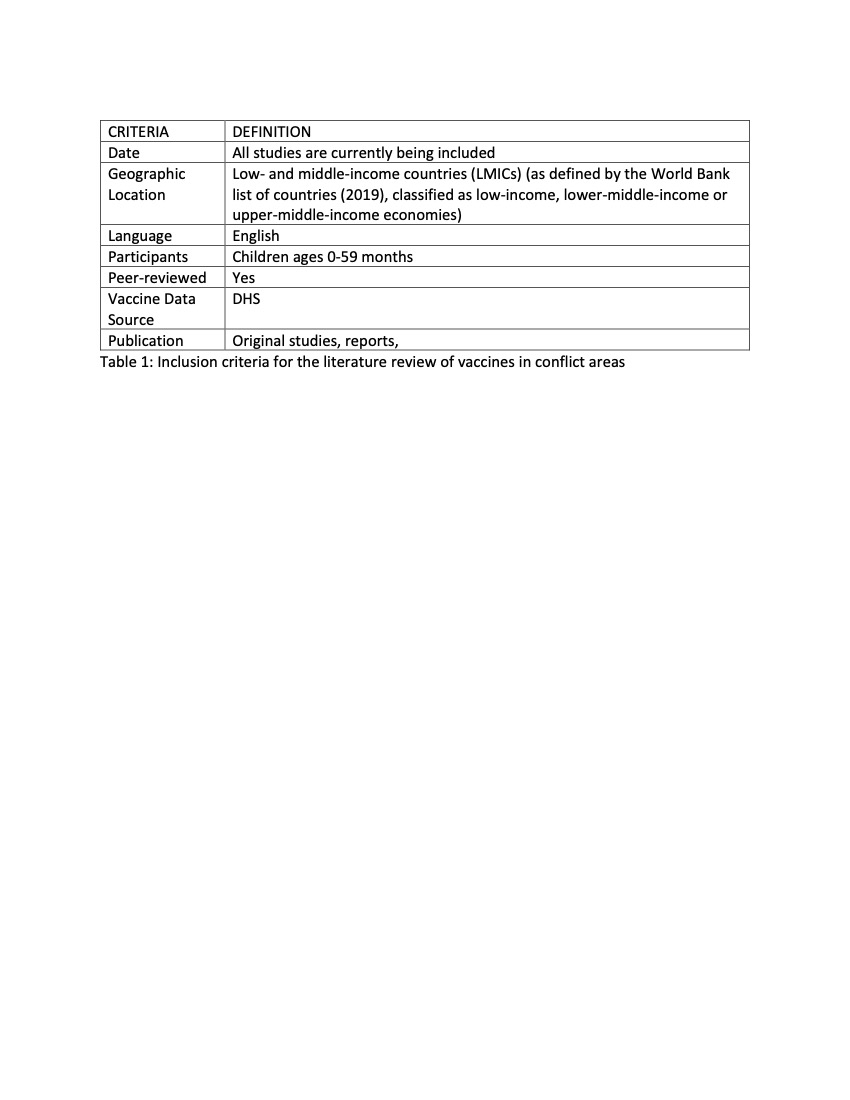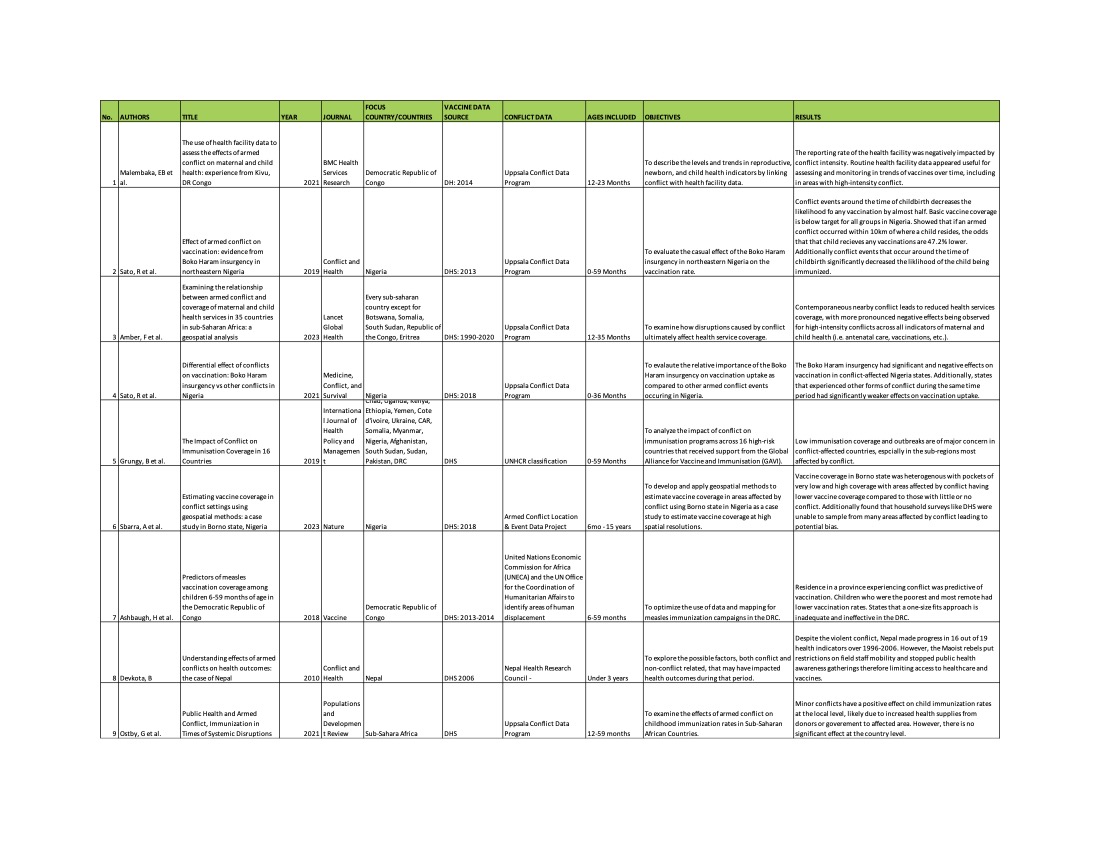Global Neonatal & Children's Health 5
Session: Global Neonatal & Children's Health 5
782 - An exploratory review of the use of Demographic and Health Survey data to estimate childhood vaccination rates in conflict-affected countries.
Sunday, April 27, 2025
8:30am - 10:45am HST
Publication Number: 782.3688
Sarah E. Benett, Johns Hopkins Children's Center, Baltimore, CA, United States; Shayna Dooling, Johns Hopkins Children's Center, Bethesda, MD, United States

Sarah E. Benett, MD, MS (she/her/hers)
Resident Physician
Johns Hopkins Children's Center
Baltimore, California, United States
Presenting Author(s)
Background: Childhood vaccination is a crucial public health intervention. The World Health Organization estimates that at least 154 million lives have been saved over the past 50 years due to vaccination efforts. Children in conflict-affected areas are often under-vaccinated or unvaccinated (zero-dose children). Demographic and Health Survey (DHS) data are nationally representative surveys that assess, among other things, the number of children with missed vaccine doses. These surveys allow evaluation of country- and region-specific vaccination programs over time.
Objective: The purpose of this paper was to provide an overview of research utilizing DHS data to evaluate zero-dose children living in conflict-affected settings and the major themes highlighted in these studies influencing zero-dose status.
Design/Methods: We conducted a PubMed search using terms related to DHS, vaccines, and conflict. Studies published in English that used DHS data to analyze childhood vaccination rates in conflict-affected areas were included. Two independent researchers screened articles, extracted data using Microsoft Excel, and assessed study quality.
Results: From an initial 5,521 records, 283 articles were included for initial screening. Twenty-two of these were selected for full-text review, and nine studies were included in our qualitative review. These studies focused on children under 5 years old and highlighted factors impacting vaccination rates in conflict settings. These factors included conflict intensity leading to healthcare infrastructure disruption and security concerns, the duration of the conflict, the national political landscape, and population displacement.
Conclusion(s): Conflict is dynamic and poses numerous challenges to vaccination efforts. Depending on the intensity and duration of the conflict, DHS sampling may be limited in affected communities due to safety and security concerns for surveyors, resulting in under-sampling in these areas. International organizations may face challenges navigating the political landscape of countries experiencing conflict and assessing population displacement when planning vaccination outreach programs. Further research should focus on the use of Geographic Information Systems (GIS) to better estimate the number of zero-dose children living in conflict areas. This information can help develop interventions to improve vaccination coverage in these communities.
Figure 1: Flow Diagram
 Flow Diagram of Articles Included in Literature Review
Flow Diagram of Articles Included in Literature ReviewTable 1: Inclusion Criteria for Literature Review
 Inclusion Criteria for Articles Included in Initial Literature Review
Inclusion Criteria for Articles Included in Initial Literature ReviewTable 2: Included Articles in the Analysis
 Included Articles in the Analysis
Included Articles in the Analysis
